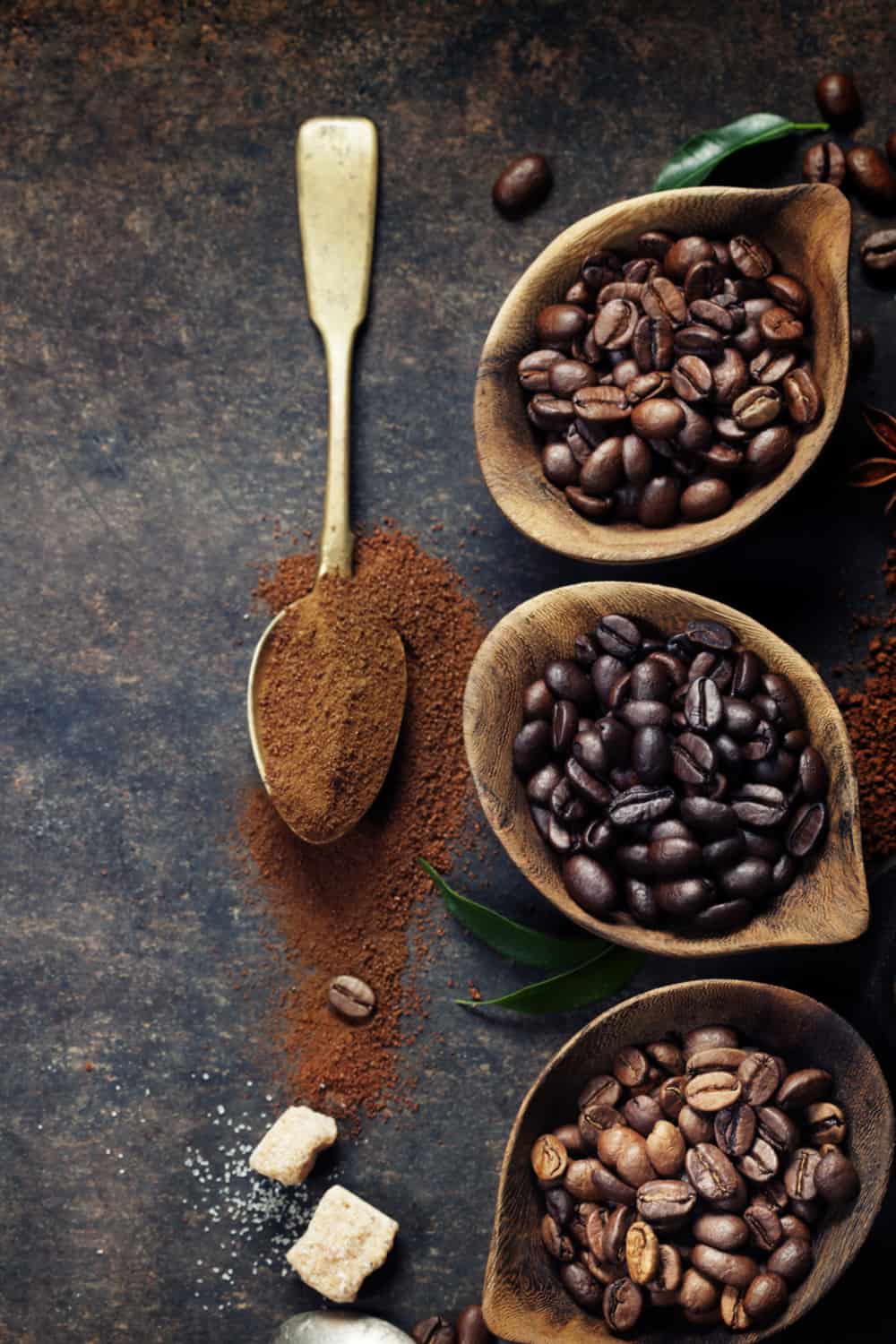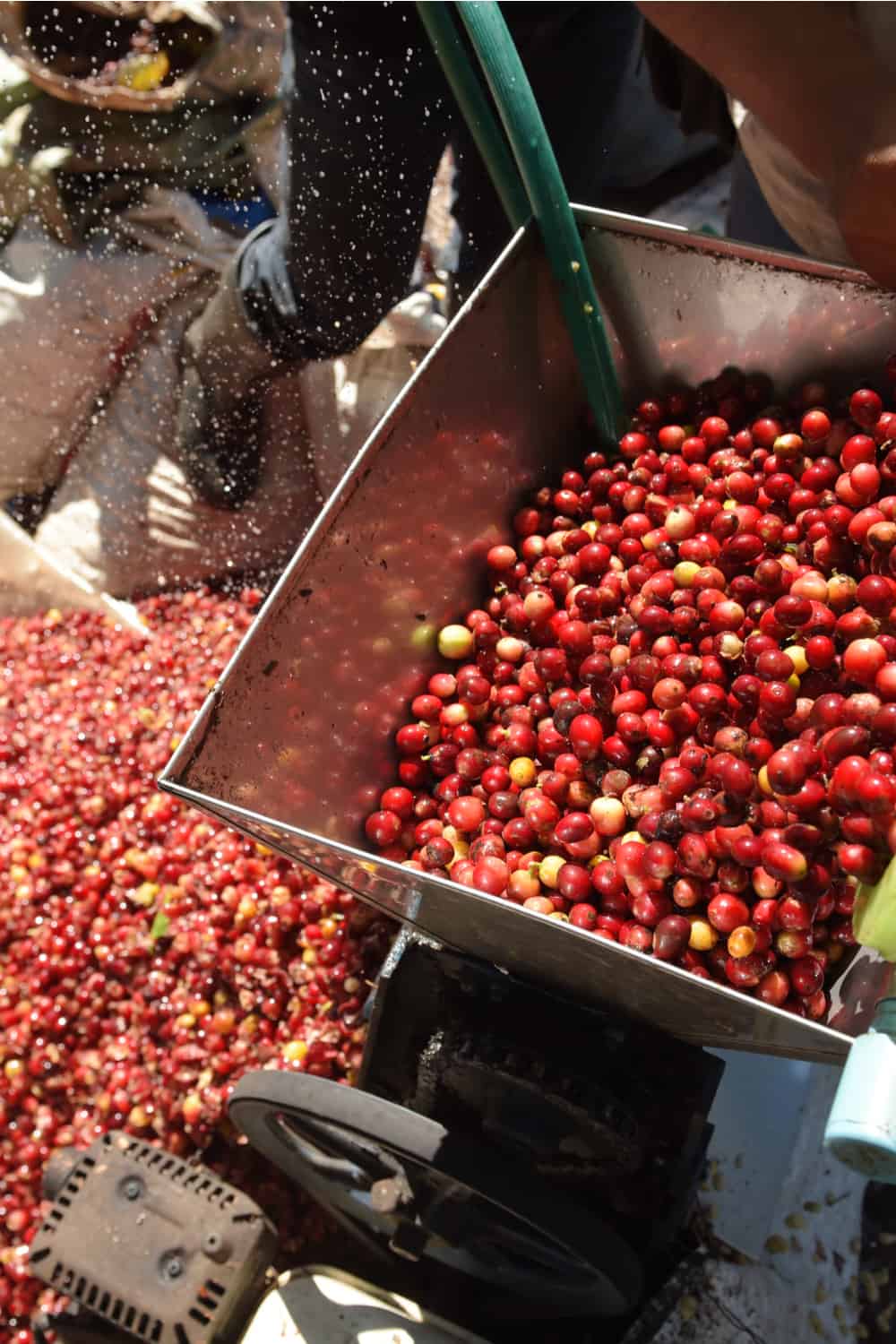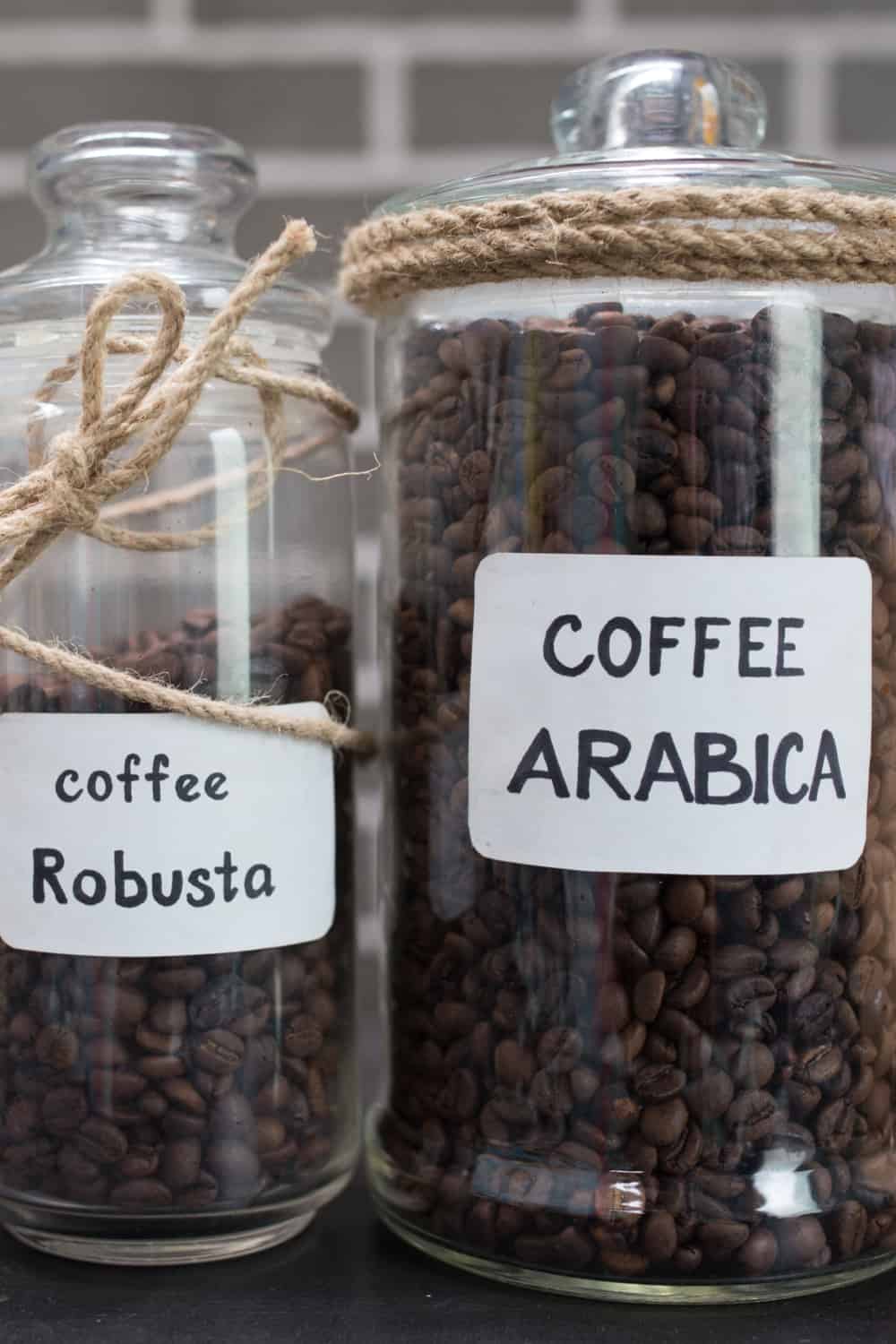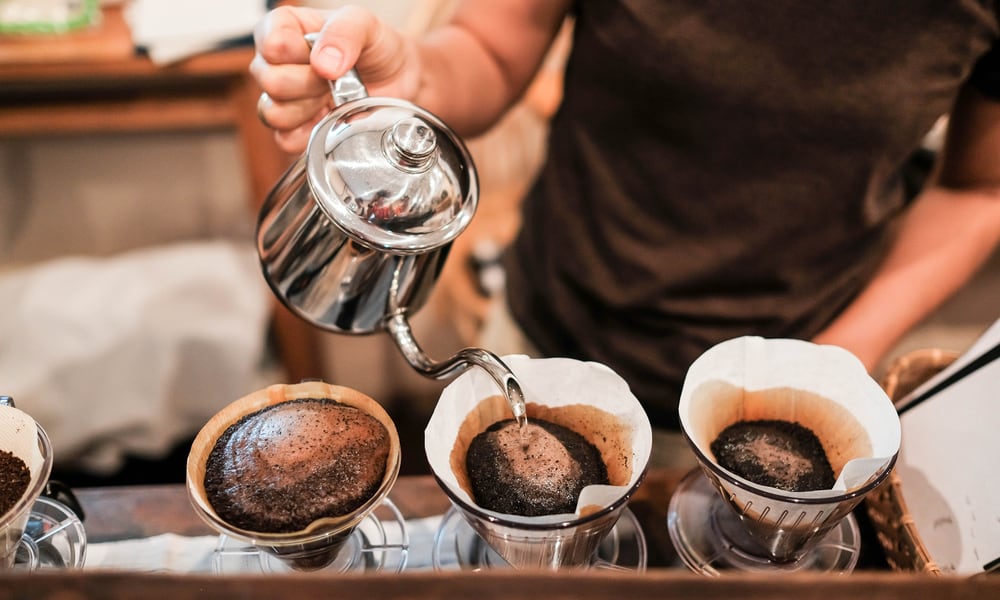Arabica, Robusta, and Colombian might all be the same type of plant, but these coffee beans have vastly different origins and tastes. Here’s what you need to know about the difference between the three main types of coffee beans.
Table of Contents
What Are They?

Before we get deeper into the differences between these types of beans, it is helpful to know a little bit about what they actually are. Technically, Arabica and Colombian beans are almost the same things.
As the name implies, Colombian and Arabica beans are primarily separate due to the locations they are grown in. Arabica coffee is a type of plant that was initially grown in Arabia while Colombian beans are grown in Colombia.
Technically, Arabica and Colombian beans both come from the same species, the Coffee Arabica plant. However, bean plants in Colombia do not grow as tall due to differences in the climate, and Colombian beans are washed after processing.
In modern coffee terminology, Arabica refers to any Arabica plants grown throughout the world while Colombian beans are a type of Arabica bean that is grown in the tropical climate of Colombia and is a little more processed.
The differences between Arabica and Robusta beans are more noticeable because they are two separate species. As mentioned previously, Arabica plants are a type of plant native to Arabia, and Robusta plants are native to Africa and Indonesia.
Robusta plants can survive in lower altitudes are more pest and weather resistant. Unlike Arabica plants, Robusta plants mature quickly and have a higher number of beans per plant.
The Arabica plant tends to look taller and have longer branches with less densely packed leaves while the Robusta plant is shorter and rounder with leaves placed closely together.
Robusta beans tend to be rounder than Arabica beans, though the two still look similar enough to get confused for each other.
Arabica Vs. Colombian Vs. Robusta Coffee Beans Processing Method

In addition to where they are grown and what type of plant they are, part of the main difference between these types of beans is their processing. The processing greatly affects the taste of the final outcome, but it does not greatly impact the overall appearance.
Coffee beans are processed with either dry or wet processing. Wet processing, which is also called washing, involves removing the fruit from around the individual coffee seeds before the beans are dried.
This is a relatively new method of processing coffee. It is used for almost all types of Colombian beans, and it is also used every now and then for some of the other variants of Arabica coffee.
Dry processed coffee is a more traditional method of processing coffee. In this type of method, the coffee fruit is picked from the trees and dried with the fruit still surrounding the seed. After the fruit is dried out entirely, the green beans are removed.
Robusta beans are typically dry-processed instead of wet-processed. The reason for this choice is that the fruit and seed coating surrounding a robusta bean is thicker and stickier.
This makes it hard to uniformly remove everything surrounding the seed, so the resulting coffee can end up a little unevenly processed. Some people are experimenting with wet-processed robusta, but it is still rare.
Arabica Vs. Colombian Vs. Robusta Coffee Beans Taste

As you can see, there are plenty of differences in the habitats and plant shapes of these types of coffee beans. However, the average person is not going to be looking at full-grown plants when trying to differentiate between the three types.
Instead, they will primarily be focusing on taste. Flavor profiles for Arabica and Robusta are noticeably different while it may be a little harder to distinguish between Colombian and Arabica beans.
First of all, the taste of Colombian and Arabica coffee beans are fairly similar. Since Colombian beans are washed beans, they tend to taste slightly cleaner and brighter. They tend to have mildly fruity tastes.
However, the wet processing used for Colombian can also cause a slightly higher level of acidity. Dry processed Arabica beans have a sweeter flavor and a heavy body. People may get floral and chocolatey notes when tasting Arabica beans.
Flavor contrasts between Robusta and all variants of Arabica beans are more pronounced. Robusta tends to have a flavor that is characterized as being stronger and harsher.
People who are not used to drinking coffee may not find Robusta’s flavors to be pleasant, but its hearty taste can be enjoyed by some.
Some of the nicer variants have flavors of grain and peanuts while poorly processed variants may have flavors reminiscent of rubber or burnt tobacco. When people think of an unpleasantly harsh coffee, they are normally imagining a bad Robusta that they have had.
However, a high-quality Robusta can have depth and richness not found in Arabica or Colombian beans. These hearty beans have a very noticeable flavor even when used in small amounts.
Which Costs More?

Of course, there are many factors that affect the cost, but on average, Robusta is cheaper than Arabica or Colombian beans. Robusta is significantly cheaper because this type of bean is so much easier to grow.
Since it requires less care, matures faster, and produces a larger crop, Robusta is typically far more affordable. The typical pound of Robusta green beans is half the price of Arabica green beans. Because it is far more affordable to purchase, Robusta is used for almost all of the cheap types of instant or flavored coffee.
Colombian beans tend to be a little pricier, but most of them are still quite affordable due to the efficient bean processing methods used in Colombia. Arabica prices can vary wildly since these beans are grown all over the world and used in a variety of coffee strains.
Brands that roast and process coffee tend to charge more than brands that sell plain, green beans. Cheaper Arabica coffee may just a few dollars per pound while some rare variants can cost up to $500 per pound.
Since there are so many options to choose from, you can easily find a Robusta, Arabica, or Colombian bean within your price range.
What Is Their Nutritional Content?

The nutritional content for Arabica and Colombian beans are fairly similar since they are the same plant. Any batch of coffee has some variations due to things like soil, rain, and sun exposure during growth.
The main nutritional differences are between Arabica and Robusta beans since they are technically two separate species. Robusta is a more “robust” plant that repels insects due to its higher presence of caffeine and chlorogenic acid.
Both of these compounds tend to result in bitterness, but they are beneficial because they are antioxidants. Many people particularly like the higher level of caffeine in Robusta because it helps them to feel alert.
Arabica may have only half the caffeine content of Robusta, but it does have some of its own nutritional benefits. These beans have twice as much sugar and 60 percent more lipids than Robusta.
Of course, the levels are still low enough to mean that both types of beans are low in calories, but the slightly higher amounts of sucrose and lipids provide a little flavor boost for Arabica. These nutritional compounds capture flavors and make the coffee taste more flavorful and smooth.
How Should You Brew It?

Flavorful and affordable, Arabica and Colombian beans can be used in a variety of ways. The majority of coffee sold in the United States is different styles of Arabica beans, so they show up in many styles of coffee brewing.
If you like traditional Arabic brewing processes, then authentically dry processed Arabica beans are essential. This type of brewing produces a thick, strong coffee that may be flavored with saffron or cardamom.
Likewise, actual beans from Colombia are advisable for Colombian style brewing that involves boiling water with the coffee. For all other styles of brewing, including French press, Chemex, Moka Pot, cold brew, and standard drip, either Colombian or Arabica can be used.
Robusta coffee tends to have a reputation for being a cheap and harsh coffee best used for instant coffee or gas station coffee pots. However, this humble bean is actually highly prized among some types of brewers.
Certain variants of Robusta are perfect for espresso because it produces a rich flavor and a smooth crema when used for espresso. Any traditional Italian espresso will require a high-quality Robusta bean.
Good Robusta beans can also be used in drip and filter methods for brewing coffee. The bold flavor can easily stand up to spices, creamers, and plenty of sugar.
Conclusion
Though all roasted coffee beans look similar, you will realize there is a big difference between the final brewed results. Choosing between Arabica, Robusta, and Colombian is primarily a matter of taste. Some like the high-caffeine content of Robusta while others like the sweet, floral tastes of Arabica and Colombia.
How about in making lette art arabica Beans and robusta beans, colour contrast and semitree please
It would be nice to see a chart of the three columns with current brand names identified in one of the columns so we would know what to buy according to the information given in this article…. I would certainly appreciate it….
Thanks